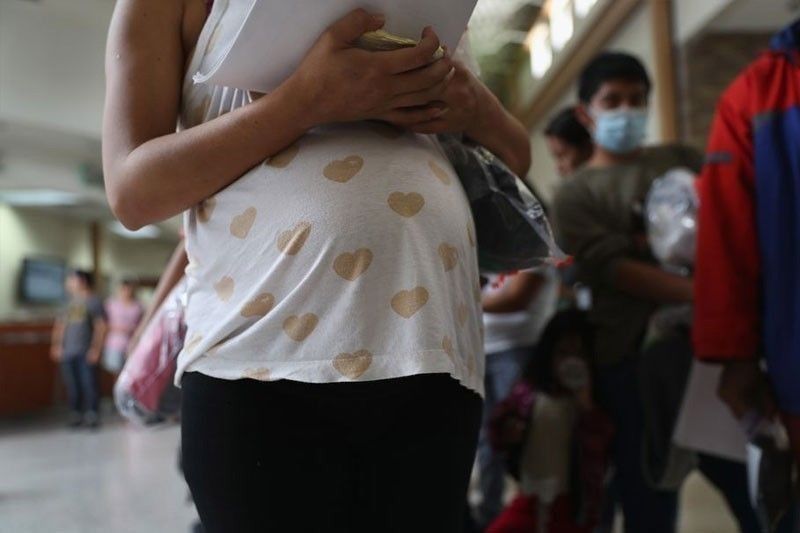Teen pregnancy most important problem of women – poll

MANILA, Philippines — Nearly 60 percent of Filipinos think that teenage pregnancy is the most important problem of women in the country, the Commission on Population (PopCom) said yesterday.
PopCom executive director Juan Antonio Perez presented results of the latest Social Weather Stations (SWS) poll on Women Concerns and Family Planning at a virtual forum.
Based on the nationwide survey done from Nov. 21 to 25, PopCom noted that 59 percent of the respondents think teenage pregnancy is the most important problem of women.
Physical violence and unexpected pregnancy followed at 11 percent each, while sexual violence accounted for 7 percent.
Last week, data from the civil registry on pregnancy of very young adolescents in 2019 were released and according to the Philippine Statistics Authority (PSA), 62,510 children gave birth in 2019.
Of these, seven very young adolescents or those between 10-14 years gave birth per day, or a total of 2,411 for the year.
The Philippine Legislators’ Committee on Population and Development (PLCPD) said all these numbers should serve as a wake-up call to the government and recalled how the National Economic and Development Authority has called teenage pregnancy a national social emergency.
“The recent data force us to examine and ask the government to explain why children in the Philippines are having children. Looking closely, we know that it is not simply because these children, particularly the very young adolescents, have chosen to have consensual sex,” PLCPD executive director Romeo Dongeto said at the same briefing.
Dongeto urged lawmakers and concerned government agencies to address the problem of teenage pregnancy, which is being compounded by the COVID-19 pandemic.
Perez gave assurance that the government was already addressing the problem.
“The PopCom pledged to address the problem of teenage pregnancy by reducing by 50 percent the number of minors giving birth through preventive measures and to reduce to zero the number of repeated pregnancy among minors,” he said.
Among those who mentioned the problem, 57 percent think that government efforts to address it are adequate, 23 percent said very adequate and 34 percent somewhat adequate.
Disturbing data
However, another the disturbing data presented by Perez was that births among underaged mothers are generally sired by older fathers aged 21 and above.
PSA child birth registration records in 2018 showed that children giving birth were as young as 10 years old and some fathers who sired their babies were aged more than 60 years.
It was shown that there were two 10-year-old girls who gave birth. The partner of one of these young mothers was aged 22.
In the 2018 listing, the PSA showed that there were seven 11-year-old girls who gave birth, of whom two registrations stated the age of the father – one being 22 and the other 52.
There were also 48 registered births by 12-year-olds, of whom 22 stated the ages of the fathers – eight were aged 15 to 19, while 14 were aged 20 to 29.
Of the 293 registered births by 13-year-olds, one father was in the 50-59 age bracket; 11 were in the 30-39 age bracket; 53 were aged 20-20; 56 were aged 15 to 19 and three were aged between 10 and 14.
Of the 1,900 registered births of 14-year-olds, nine fathers were aged 10 to 14; 542 were aged 15 to 19; 523 between 20 and 29 years old; 46 between 30 and 39; seven aged 40-49; two aged 50-59 and one already 61 years old.
Of the 7,334 registered births of 15-year-olds, one father was 76 years old; one was 62; six were aged 50 to 59; 17 were 40-49; 190 were 30-39; 2,619 were aged 20-29; 2,142 were 15-19 and 15 were aged 10-14.
Of the 18,000 registered births of 16-year-old girls, one father was aged 73 and another beyond 80 years old; six were aged 60-69; 12 were 50-59; 63 were aged 40-49; 523 were aged 30-39; 7,217 were 20-29; 5,218 were 15-19 and 11 aged 10-14.
Of the 34,749 registered births of 17-year-olds, one father was a 70-year-old; seven were aged 60 to 69; 37 were 50-59; 137 were 40-49; 1,185 were 30-39; 16,543 were 20-29; 8,728 were 15-19 and 10 were aged 10 to 14.
“We’re noting that, based on PSA data, the partners of these minor mothers, from 10 to 17, tend to be older than them at a ratio of roughly two partners being older out of three with partners being older than 20,” Perez said.
“Today we’re working on whole-of-government approach to address (this) imminent crisis. Many government agencies are taking action on teen pregnancies,” he added.
Perez said the PopCom and the Department of Social Welfare and Development are working on a social protection program for minors who have become mothers.
But PLCPD wants to see movement in legislative measures, particularly the prohibition of child marriage in the country, and raising the age to determine statutory rape from below 12 to below 16.
It is also pushing for the full implementation of the Reproductive Health Law which mandates comprehensive sexuality education.
73 percent never used FP methods
The same survey indicated that a remarkably high 73 percent of respondents have never used family planning (FP) methods in the past six months.
Findings of the survey indicated that one out of four adult Filipinos uses or had used FP methods in the past six months.
Among FP users, pills are the most preferred method and used by 14 percent.
Almost half or 45 percent of FP users have availed themselves of such services from rural health centers, 31 percent from barangay health stations and 27 percent from pharmacies.
Private health professionals such as doctors, nurses and midwives and barangay health workers are the people whom one has spoken about FP.
Barangay health workers are the top source of information about FP at 46 percent, followed by television at 23 percent.
Perez said PopCom is not worried over the findings that 73 percent are not using FP methods mainly because half of the respondents are males.
He noted that fewer men are using FP methods while data from the Department of Health showed that 58 percent of women of reproductive age, married or living in, are using FP.
About 18 percent said they had difficulty accessing FP services due to the pandemic and other reasons, hesaid.
- Latest
- Trending





























